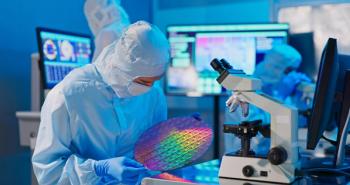
- ICP-OES and ICP-MS Techniques for Today's Spectroscopists
- Volume 36
- Issue S9
The Determination of Metals in Disposable, Non-Medical Face Masks by ICP-OES
The determination of metals in hygienic face masks is important for global heath at this time. Following the guidelines of ISO 18562-4, an ICP-OES method is described including sample preparation, analysis, and validation of the methodology.
Although the public uses a wide range of face masks for the prevention of Covid-19 transmission, the most common is the 3-layer hygienic mask, which is manufactured and used globally. Since the rigorous quality standards required for certified medical masks, such as N-95 face masks, are not applicable to hygienic masks, it is important to assess the quality and safety of this mask category. Although consistent global standards do not exist for the determination of metal content in hygienic facemasks, ISO 18562-4:2017 “Biocompatibility Evaluation of Breathing Gas Pathways in Healthcare Applications–Part 4: Leachables in Condensate” provides guidance for the analysis of metals in facemasks. This work describes the determination of metals in hygienic facemasks using ICP-OES, following the guidelines of ISO 18562-4, including sample preparation, analysis, and validation of the methodology.
The use of face masks for preventing the spread of Covid-19 is a required safety precaution in many public indoor areas across the globe. Face masks fall into two broad categories: surgical/medical and hygienic/disposable. The most common surgical/medical face mask is the N-95 respirator. Because these face masks are designed to minimize the spread of particles to protect both patients and medical staff, regulations have been established to ensure product quality and protect human health. Since regulations must be met, production cannot meet the demand of the general population, which therefore wears hygienic/disposable face masks to reduce the spread of airborne diseases. Even though these types of face masks do not have required standards that must be met in Europe and the United States, they have been recommended for limiting transmission of the Covid-19 virus and protecting people.
There are many types of hygienic face masks being used by the general public, with the most common being the three-layer disposable hygienic face mask, consisting of an innermost layer (closest to the wearer’s face), a middle layer, and an outer light blue layer, as shown in Figure 1. These types of face masks are being manufactured and worn globally.
As with any consumer product, it is important to validate that hygienic face masks do not pose any additional risk to their users. Two categories of analytes which must be evaluated are volatile organic compounds (VOCs) and metals. This work will discuss the determination of metals in hygienic face masks.
Globally, there are no consistent regulations or agreed-upon levels of metals in hygienic face masks, with different regions having different classifications, metals, and limits. However, ISO Method 18562-4:2017 “Biocompatibility of Breathing Gas Pathways in Healthcare Applications–Part 4: Leachables in Condensate” (1) provides guidance that is relevant and may be applied, since it discusses the sample preparation, analytes, and methodologies used to evaluate data quality. This method states that the analytes and limits are defined by USP <232> (2), with validation following USP <233> (3). Because face masks cover the nose and mouth, ISO 18652 states that the route of exposure is inhalation, assuming a maximum daily condensate intake of 1 mL. Analytes and their maximum daily exposure through inhalation (as defined in USP <233>) are shown in Table I.
USP <232> defines the relevant concentrations as the J value, according to equation 1:
with PDE equaling maximum permissible daily exposure (μg/g); Maximum Daily Dose equaling maximum amount of the medication consumed; and Dilution Factor equaling dilution used in sample preparation and the mass of sample or sample preparation volume.
Disposable, non-medical face masks are challenging to analyze, due to the light weight of the inner layer, which results in lower analyte concentrations for method validation, a direct result of the J-value calculations.
To simulate exposure, sample preparation is vital, as ISO 18562-4:2017 discusses in detail. It is important that analytes be leached at 37 °C (normal human body temperature) from the part of the face mask which the wearer is exposed to for a time representative of the duration the face mask is worn.
This work describes the sample preparation and analysis of metals in disposable, non-medical face masks with ICP-OES to meet the criteria defined in ISO 18562-4:2017.
Materials and Methods
A variety of disposable, three-ply, non-medical-grade face masks were purchased, and the inner layer removed. Depending on the brand, the inner layers ranged in mass from 0.50–0.58 g, with most being ≈ 0.55 g. To minimize the creation of additional surface area and to better simulate a user’s exposure, the inner layer of each mask was not cut into smaller pieces, but rather leached whole.
For the leaching procedure, each inner layer was added to a 50 mL autosampler tube and pushed to the bottom, followed by the addition of 10 mL of 10% HCl + 1% HNO3 (v/v). Nitric acid was used to stabilize most elements, while the hydrochloric acid was required to stabilize the platinum group elements; 10% HCl was required to stabilize gold (Au) in solution over the leaching time. The tubes were capped and shaken before being heated in a sample preparation block at 37 °C for 4 h to simulate a common time a person may wear a face mask during a typical day. After 4 h, the acid was decanted into 15 mL autosampler tubes for analysis.
The validation procedure for USP <233> requires several pre-sample preparation spikes to ensure that no analyte is lost during the sample preparation procedure. Sample spikes of 0.5J, 1J, and 1.5J were added to empty 50 mL autosampler tubes, followed by the mask inner layers. The inner layers were pushed to the bottom of the autosampler tubes to maximize contact with the spike solutions and allowed to sit for 30 min to absorb as much of the spike solutions as possible.
The acid mixture was then added so that the final volume of liquid added to each tube was 10 mL. The sample preparation is then continued as for the unspiked mask inner layers.
Calibrations were made against external calibration curves at 0.5J and 1.5J (as specified in USP <233>), and yttrium (Y) was added to all blanks, calibration standards, and samples as an internal standard.
All analyses were performed on a PerkinElmer Avio 550 Max ICP-OES using the analytes and wavelengths in Table I, along with the conditions and parameters in Table II. For maximum sensitivity, all analytes were measured with an axial plasma view, while high resolution was used to separate analytes from potential interferences. Multicomponent spectral fitting (MSF) was applied to Ir 208.882 nm to more easily resolve the peak from the baseline noise.
Results
To assess the presence of analytes in the mask inner layers, samples were measured after 4 h of leaching. The concentrations of all analytes in all samples were less than 0.3J, a level more than three times lower than the inhalation PDE. These results indicate that the acids used for leaching do not extract excess analytes over time, as compared to normal respiration.
ISO 18562 states that methodology must be validated following USP <233> criteria for:
1. Accuracy: Pre-preparation spike recoveries of 0.5J, 1J, and 1.5J must be between 70–150%.
2. Repeatability: Relative standard deviations (RSDs) of six independent samples spiked at J must be less than 20%.
3. Ruggedness: Six solutions must be analyzed on different days, with different instruments, or with different analysts. The RSDs over the 12 measurements must be less than 25%.
4. System Suitability: The difference in the results of the high calibration standard (1.5J) measured at the beginning and end of a batch must be <20%.
Figure 2 shows that all the above criteria are met for all elements, with the exception of gold (Au) and palladium (Pd) in the accuracy study: both of these elements recovered just at or below the 70% minimum threshold.
To investigate Au and Pd, another accuracy study was performed, but without the mask inner layers. The leach procedure was followed and spikes added, except the mask inner layers were not added to the sample tubes; only the acid mixture and spike solutions were added to the tubes. The recoveries from this accuracy study show that all elements recover within 10%, including Au and Pd, suggesting that Au and Pd stick to the mask inner layers and are not extracted during the leach process. The implication is that wearers will not inhale Au and Pd if they are present in face mask inner layers.
Conclusion
This work has demonstrated the ability of ICP-OES to effectively measure metals in non-medical, disposable mask inner layers, following ISO 185642-4:2017, which references the analytes and validation procedures from USP <232> and <233>. A four-hour leach simulates how long a person may wear a mask during a typical day. The results indicate that the methodology easily meets the criteria for USP <233> for all analytes, except Au and Pd, which stick to the mask inner layers and would not be inhaled. Although ICP-MS could also be used for this analysis, ICP-OES has proven to be a cost-effective alternative to ICP-MS capable of meeting the criteria in ISO 185642-4:2017.
References
(1) ISO 18562-4:2017 “Biocompatibility Evaluation of Breathing Gas Pathways in Healthcare Applications – Part 4: Leachables in Condensate,' ISO 2017.
(2) General Chapter <232> “Elemental Impurities–Limits,” in 2nd Supplement in United States Pharmacopeia 35-National Formulary 30 (United States Pharmacopeial Convention, Rockville, Maryland, 2018).
(3) General Chapter <233> “Elemental Impurities–Procedures,” in 2nd Supplement in United States Pharmacopeia 35-National Formulary 30 (United States Pharmacopeial Convention, Rockville, Maryland, 2018).
Kenneth Neubauer is a Principal Application Scientist at PerkinElmer, Inc. in Shelton, Connecticut. Direct correspondence to:
Newsletter
Get essential updates on the latest spectroscopy technologies, regulatory standards, and best practices—subscribe today to Spectroscopy.




